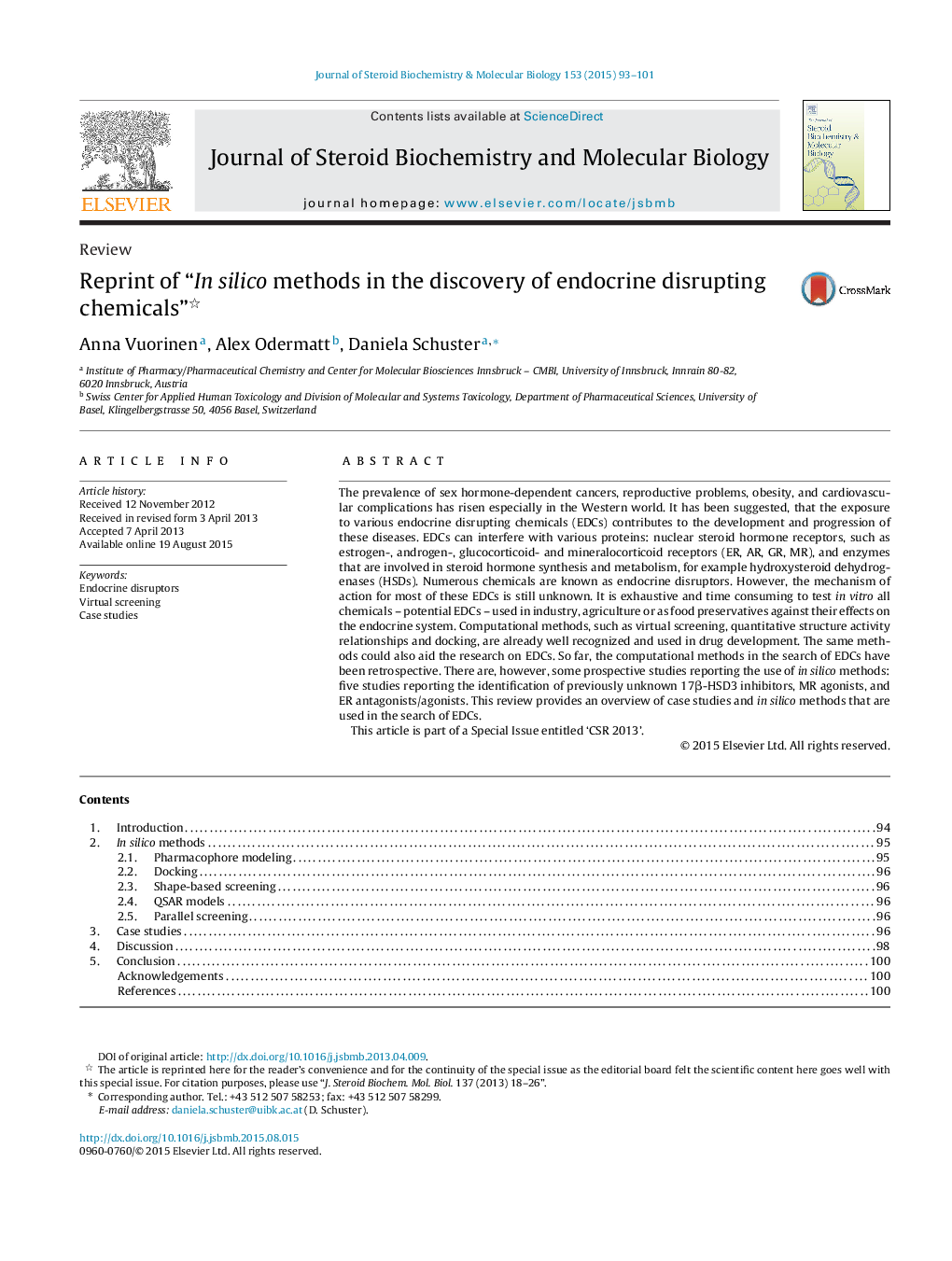| کد مقاله | کد نشریه | سال انتشار | مقاله انگلیسی | نسخه تمام متن |
|---|---|---|---|---|
| 1991259 | 1540996 | 2015 | 9 صفحه PDF | دانلود رایگان |
• EDCs interfere with nuclear receptors and hormone-synthesizing enzymes.
• The mechanism of action for most EDCs is unknown.
• In silico methods are powerful tools for activity predictions and profiling
• There are currently only few reports on using in silico methods in the search for EDC.
• We review methods and studies on EDCs using virtual screening and in vitro testing.
The prevalence of sex hormone-dependent cancers, reproductive problems, obesity, and cardiovascular complications has risen especially in the Western world. It has been suggested, that the exposure to various endocrine disrupting chemicals (EDCs) contributes to the development and progression of these diseases. EDCs can interfere with various proteins: nuclear steroid hormone receptors, such as estrogen-, androgen-, glucocorticoid- and mineralocorticoid receptors (ER, AR, GR, MR), and enzymes that are involved in steroid hormone synthesis and metabolism, for example hydroxysteroid dehydrogenases (HSDs). Numerous chemicals are known as endocrine disruptors. However, the mechanism of action for most of these EDCs is still unknown. It is exhaustive and time consuming to test in vitro all chemicals – potential EDCs – used in industry, agriculture or as food preservatives against their effects on the endocrine system. Computational methods, such as virtual screening, quantitative structure activity relationships and docking, are already well recognized and used in drug development. The same methods could also aid the research on EDCs. So far, the computational methods in the search of EDCs have been retrospective. There are, however, some prospective studies reporting the use of in silico methods: five studies reporting the identification of previously unknown 17β-HSD3 inhibitors, MR agonists, and ER antagonists/agonists. This review provides an overview of case studies and in silico methods that are used in the search of EDCs.This article is part of a Special Issue entitled ‘CSR 2013’.
Figure optionsDownload as PowerPoint slide
Journal: The Journal of Steroid Biochemistry and Molecular Biology - Volume 153, September 2015, Pages 93–101
